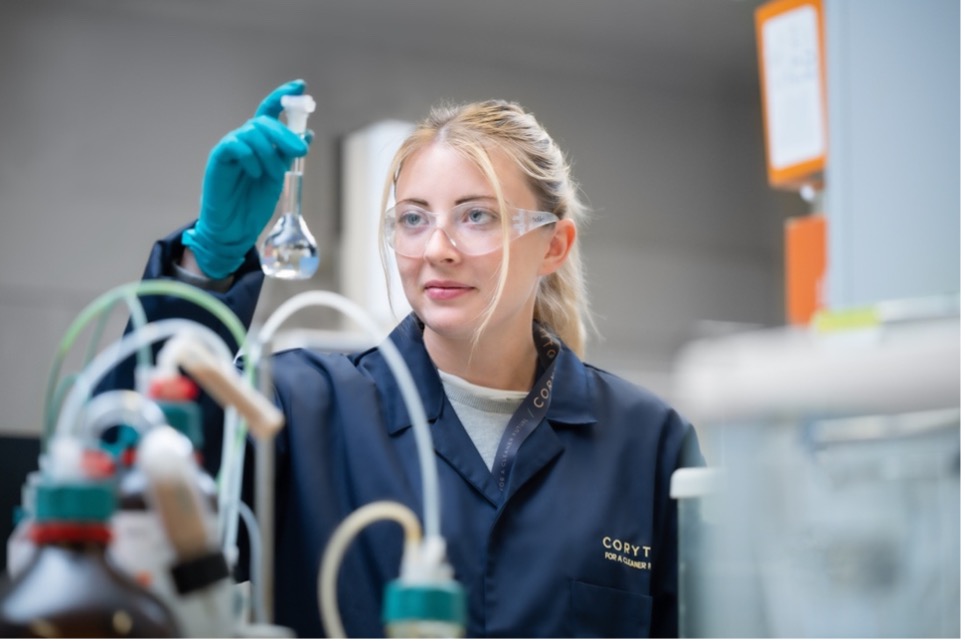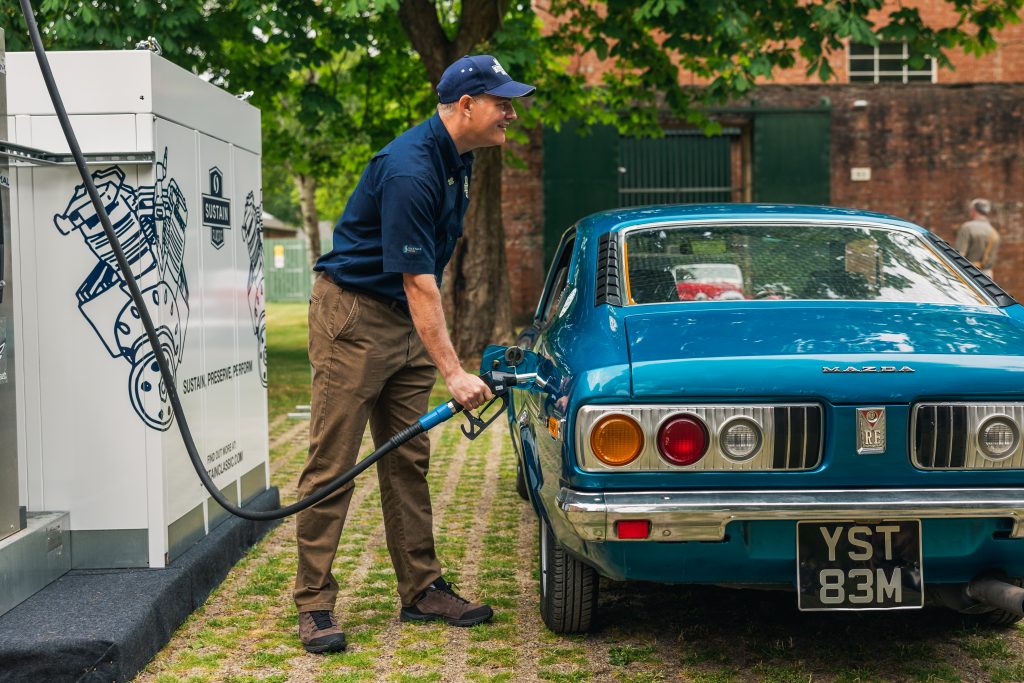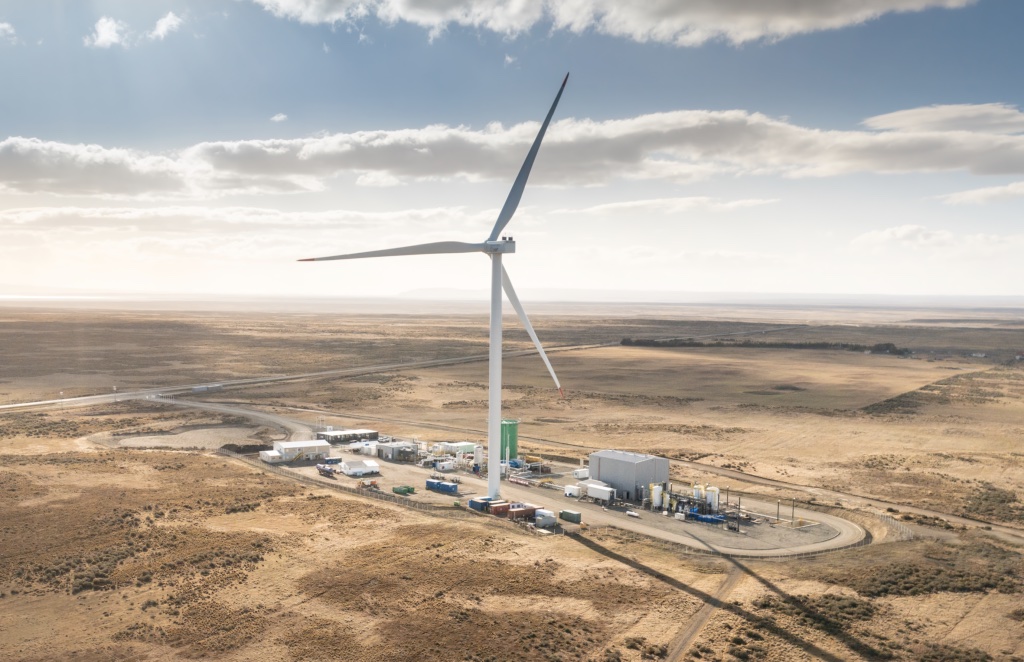Under pressure from car makers and consumers, the European Union looks set to allow the continued production of internal combustion–powered cars beyond 2035 – as long as those vehicles run exclusively on carbon-neutral fuel.
The decision would extend the life of the automobile and its Otto cycle, giving drivers a choice of what to drive – old, new, hybrid, ICE-only – rather than simply forcing them into electric vehicles.

There’s no need to wait until you’re told, however. There are already a number of sustainable fuels on the market that can cut your carbon footprint – although by how much and at what cost is a massive variable.
Regardless of the methods, which we’ll come to, the goal of these automotive cocktails is the same: to end the auto industry’s reliance on fossil fuels and dramatically cut carbon emissions.
“Crude oil is an embedded carbon, it’s safely locked away in the ground, not causing any sort of damage to the environment,” explains David Richardson from British fuel firm Coryton. “And ideally, that’s where we would keep it so that we’re not then releasing that carbon through to the environment, and adding to greenhouse gases, and the warming effects that you get. When you take the crude out, you turn it into a fuel and you burn it, you’re releasing that carbon energy into the environment as a new carbon source.
“Where we are with the sustainable fuels, you’re effectively recycling the carbon that has already been released into the environment either through burning fossil fuels or through other industry processes or just natural CO2. So, what you’re really doing is you’re looking for a way that is efficient at capturing that carbon into something that you can then process to turn it back into a liquid fuel.”
In addition to hydrogen, which automotive engineers have tinkered with since 1807, two different technologies have emerged in the realm of sustainable fuels: e-fuels and bio-fuels – and yes, they’re different. Let’s break each down.
Bio-fuels
Put simply, bio-fuels are those that are based on (recently living) biological materials. Those could be crops crown purely for the purpose of producing fuel, or, a rather better option, waste products of crops grown for food.
“Using biomass works really nicely because we have Mother Nature doing all the heavy lifting for us. She’s very efficient at absorbing carbon dioxide,” says Richardson.
The pump gas found in most of the world contains a portion of bio-fuel in the form of ethanol. In Europe, it comprises between five and ten per cent of the mixture, while in the U.S., it’s typically ten (E10)—although E15 and even E85 (for flex-fuel vehicles) is also available.
While ethanol-cut petrol does cut the amount of crude oil consumed, and therefore, reduce net carbon emissions, high ethanol content makes this option unsuitable for older vehicles. That’s because ethanol is corrosive and can eat away at plastic, rubber, and metal components in the fuel system. It’s also hygroscopic, which means it absorbs water from the atmosphere, which can lead to condensation.

Coryton’s Sustain fuels solve this problem thanks to a chemical process that eliminates ethanol almost completely. Raw materials from agricultural and food waste go through an initial fermentation stage that turns them into ethanol. A further two-stage catalytic process changes the chemical structure into that of a hydrocarbon fuel with barely a trace of ethanol.
This fuel is then blended with a fossil-based gasoline to produce three blends: Super 33, Super 80, and Racing 50. (The numbers refer to each fuel’s minimum sustainable content.) Coryton claims that, factoring in the manufacturing process, Super 80 can save 65 percent greenhouse gas emissions compared to a conventional high-octane unleaded fuel.
The fuel is a direct swap for pump gas and Coryton claims there are no negative effects. We certainly didn’t notice any when we tried it in a Jaguar E-Type; we will soon be putting it to the test in an eight-hour endurance race, so stay tuned.

At the moment Coryton’s fuels are prohibitively expensive (around double the price of pump gas) and limited in availability, although the company is increasing the number of outlets (from one) in the UK, and has supplied small batches all over the world, typically for classic-car and motorsports events.
Coryton adds that its current plant could produce up to 30 million litres of sustainable fuel per year and that there is enough agricultural waste in Europe to fuel all of the continent’s cars, light trucks, and motorcycles.
Cost and performance requirements mean that the company’s current fuels can’t meet Europe’s zero-carbon requirements, but as one of the processes actually absorbs more carbon than is emitted when the fuel is burnt, a fully neutral version is theoretically possible.
Until then, the only way to a truly zero-net carbon gasoline is through e-fuels.
E-fuels
Where bio-fuels use the carbon captured in plants as one of their key building blocks, e-fuels rely on carbon directly pulled from the atmosphere. This is then combined with hydrogen to create those hydrocarbons we all crave.
E-fuels may sound like the perfect solution, but the biggest problem is just how much energy is required to create them. Where that energy comes from dictates whether the fuel is carbon-neutral or not.
Capturing carbon from the air and releasing hydrogen from water via electrolysis needs a lot of electricity. If that electricity comes from the grid then there could be fossil fuels such as natural gas or coal in the mix.
That’s why Porsche’s e-fuel venture is located in Chile and powered by an abundance of wind turbines. Porsche claims that, compared to current pump gas, its e-fuel could reduce greenhouse gas emissions by up to 85 percent. To get to that magic 100 percent mark, as required by Europe, the fuel must be transported, and even pumped, only using renewable energy.

Initially producing fuel to support Porsche racing programs, the factory will ultimately be able to produce some 550 million litres of e-fuel.
As with much technology transfer, motorsports leads the way. P1 Fuels, for example, uses a combination of carbon capture and biomass to create its fossil-free fuel and has fueled karting, historic racing, and rallying, even the World Rally Championship.
What about hydrogen?
The most abundant element in the universe has many advocates. Hydrogen can be used to create electricity by chemical reaction in a fuel-cell or it can be burned in an internal combustion engine. Either way, the only emission is water vapour – there’s not a carbon atom in sight.
Of course, hydrogen is not without its drawbacks. For one, the production of true green hydrogen can only be done through electrolysis using clean energy – just as e-fuel is. There’s also blue hydrogen, which can be extracted from natural gas, but that defeats the object.

Toyota has successfully run rally, race and classic cars, on hydrogen, and built two iterations of its Mirai sedan. Ambitious startups such as America’s Hyperion also reckon hydrogen is the way forward.
However, it’s also notoriously difficult to store: It must be contained at high pressure in liquid form, since it has a tendency to escape at every opportunity.
So far the public hasn’t exactly embraced H2, and the number of global hydrogen filling stations across the world is just 814, according to the latest figures from Hydrogen Central. As with e-fuel, for hydrogen to be truly carbon neutral its whole supply chain would need to be sustainably powered.
When it comes to creating a 100 per cent sustainable fuel that can keep beloved classics and future exponents of internal combustion on the road, we are not there yet. The good news is that there are a number of routes to explore, and even now there are options to reduce your carbon footprint and still enjoy driving as Otto intended.










Great article, very interesting! I’m aware of a pioneering hydrogen powered car manufacturer in the UK, called RiverSimple. I’m sharing in case you might want to mention them in any future articles on the subject. https://www.riversimple.com/
My classics won’t be converted to EV. The annual mileage I do is relatively small, so will use whatever carbon fuel is permitted in the years to come. Having said that, I probably won’t be around by 2050 when the chias and reality of net zero is forced upon us.
A typically informative, rational and well-balanced piece. If this helps us to keep our classics running as they were intended, without the environmentally disastrous battery conversions, then not only will this be a better solution for the environment, but also an aesthetically preferable approach.